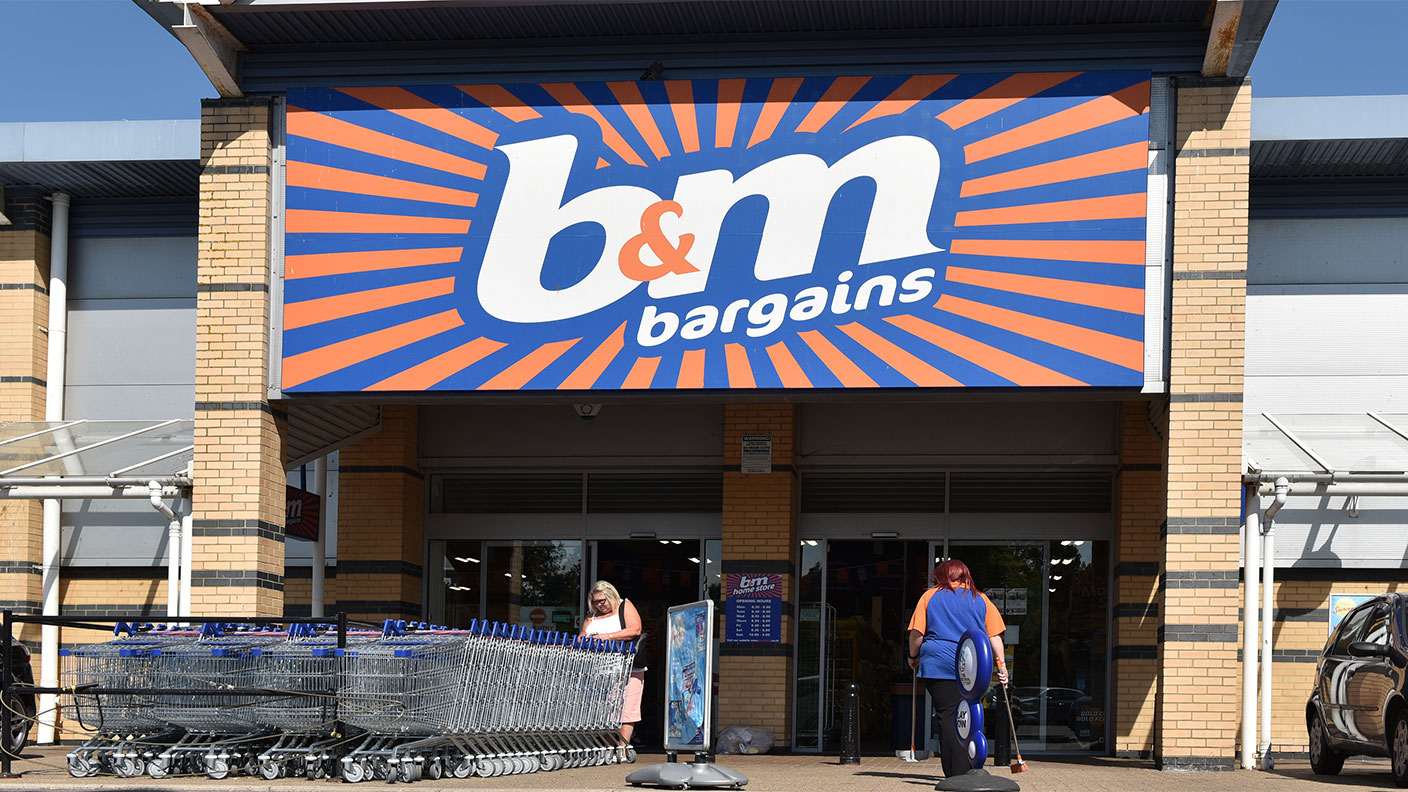Why the cost of living crisis could be a boon for this cheap retailer
Like many retailers, B&M is facing the dual headwinds of lower sales and higher costs as inflation bites. But its business model has proved hugely successful, says Rupert Hargreaves, and it should have what it takes to prosper in a tough market.


It’s an incredibly challenging time to be a retailer.
Not only are these companies having to deal with rising input costs across the board and demands for higher wages from employees, but the cost of living crisis is also weighing on consumer sentiment and spending power. These dual headwinds of lower potential sales and higher costs are the worst case scenario for the sector.
However, some retailers appear well positioned to capitalise on this environment. Next (LSE: NXT) has spent a huge amount of money building out its online infrastructure, which gives the firm a competitive advantage in the viciously competitive retail sector. Meanwhile, supermarket retailer Tesco (LSE: TSCO) is able to use its size and economies of scale to keep costs low for customers. Those are the reasons why these two stocks are my top picks in the sector.
MoneyWeek
Subscribe to MoneyWeek today and get your first six magazine issues absolutely FREE

Sign up to Money Morning
Don't miss the latest investment and personal finances news, market analysis, plus money-saving tips with our free twice-daily newsletter
Don't miss the latest investment and personal finances news, market analysis, plus money-saving tips with our free twice-daily newsletter
But keeping costs as low as possible is also at the core of B&M European Value Retail’s (LSE: BME) business model.
Putting customers first with low prices
Over the past six years, B&M has seen revenues nearly double as management focuses on providing what consumers want: quality goods at a low price.
This is going to be an advantage as consumers start to watch their budgets. According to the company’s own price comparisons, a basket of food and fast-moving consumer goods (things like shower gel and deodorant to you and me) is about 15% cheaper in its shops compared to a supermarket competitor.
What’s more, 93% of all the products sold at a B&M store are less than £20.
The organisation’s “stack them high, sell them cheap” business model has proved hugely successful, powering growth from just 21 shops in 2004 to 1,125 at the end of its 2023 fiscal first quarter.
It looks as these qualities are helping the group cope well in the current environment.
According to its latest trading update, covering the 13 weeks to 25 June, revenue declined by 2.2% on a constant currency basis compared to the previous year. However, this comparison is a bit unfair as it includes a period of lockdowns in 2021, when restrictions stopped consumers from visiting many of the company’s competitors.
As the economy has reopened consumers have returned to their normal shopping habits. This has had a disproportionate impact on B&M, which was classed as an essential retailer throughout the pandemic. Revenues dropped 19.1% on a like-for-like basis over the five weeks to the beginning of April due to this anomaly, although during May and June revenues declined just 1.6%, which I think is a better indicator of how the business is performing in the current economic climate.
Further, there was a notable improvement at the group’s French business with sales jumping from £68m to £91m. The company increased the size of its store portfolio in the region by 4%.
It’s not all good news for B&M
Unfortunately, the group is expecting consumer shopping habits to change due to the cost of living crisis. It’s mainly expecting consumers to shift their spending from higher margin general merchandise products towards food and other essentials.
This could hit B&M’s earnings before interest, tax, depreciation and amortisation (Ebitda) margin by between 70 and 130 basis points for the year. After factoring in this margin pressure, management is forecasting 2023 Ebitda of between £550m and £600m. That’s below the level achieved over the past two years, although it is nearly double pre-pandemic levels.
At the same time, the group is having to deal with a major internal challenge. CEO Simon Arora is stepping down and is being replaced by the firm’s CFO. Arora has been steering the company since 2004, when he acquired the chain of shops with his brothers. His vision and leadership have helped turn B&M into what it is today, one of the country’s largest retailers with a place in the FTSE 100.
Despite the economic climate, I’m more concerned about this change. B&M needs a steady hand on the tiller right now to help it navigate the storm. Transitioning to a new CEO is always a challenge, and it could become a distraction the company can ill afford.
Still, despite this factor, I think B&M possesses the sort of competitive advantages that are required to prosper in a tough market. The stock also looks appealing from a valuation perspective.
Based on Refinitiv analyst estimates, the shares are trading at a forward price/earnings (p/e) multiple of 10.6. Analysts are also projecting a dividend yield of 5.2% for the current financial year.
While there’s no denying the business is in for a rough ride, it seems there is a lot of negativity already factored into the share price. On that basis, I would be happy to consider this stock for my portfolio as a potentially undervalued growth play with attractive income credentials.
SEE ALSO:
Tesco looks well-placed to ride out the cost of living crisis – investors take note
The cost of living crisis is hurting retailers – here are the stocks to avoid
Next’s results stand out against a tough retail backdrop
Get the latest financial news, insights and expert analysis from our award-winning MoneyWeek team, to help you understand what really matters when it comes to your finances.

Rupert is the former deputy digital editor of MoneyWeek. He's an active investor and has always been fascinated by the world of business and investing. His style has been heavily influenced by US investors Warren Buffett and Philip Carret. He is always looking for high-quality growth opportunities trading at a reasonable price, preferring cash generative businesses with strong balance sheets over blue-sky growth stocks.
Rupert has written for many UK and international publications including the Motley Fool, Gurufocus and ValueWalk, aimed at a range of readers; from the first timers to experienced high-net-worth individuals. Rupert has also founded and managed several businesses, including the New York-based hedge fund newsletter, Hidden Value Stocks. He has written over 20 ebooks and appeared as an expert commentator on the BBC World Service.
-
 The most influential people of 2025
The most influential people of 2025Here are the most influential people of 2025, from New York's mayor-elect Zohran Mamdani to Japan’s Iron Lady Sanae Takaichi
-
 Millions of parents are missing out on up to £720 a year in extra pension cash – are you affected?
Millions of parents are missing out on up to £720 a year in extra pension cash – are you affected?A mum who narrowly missed out on the pension boost said she “never knew the government rule existed” and wants other parents to use it
-
 Halifax: House price slump continues as prices slide for the sixth consecutive month
Halifax: House price slump continues as prices slide for the sixth consecutive monthUK house prices fell again in September as buyers returned, but the slowdown was not as fast as anticipated, latest Halifax data shows. Where are house prices falling the most?
-
 Rents hit a record high - but is the opportunity for buy-to-let investors still strong?
Rents hit a record high - but is the opportunity for buy-to-let investors still strong?UK rent prices have hit a record high with the average hitting over £1,200 a month says Rightmove. Are there still opportunities in buy-to-let?
-
 Pension savers turn to gold investments
Pension savers turn to gold investmentsInvestors are racing to buy gold to protect their pensions from a stock market correction and high inflation, experts say
-
 Where to find the best returns from student accommodation
Where to find the best returns from student accommodationStudent accommodation can be a lucrative investment if you know where to look.
-
 The world’s best bargain stocks
The world’s best bargain stocksSearching for bargain stocks with Alec Cutler of the Orbis Global Balanced Fund, who tells Andrew Van Sickle which sectors are being overlooked.
-
 Revealed: the cheapest cities to own a home in Britain
Revealed: the cheapest cities to own a home in BritainNew research reveals the cheapest cities to own a home, taking account of mortgage payments, utility bills and council tax
-
 UK recession: How to protect your portfolio
UK recession: How to protect your portfolioAs the UK recession is confirmed, we look at ways to protect your wealth.
-
 Buy-to-let returns fall 59% amid higher mortgage rates
Buy-to-let returns fall 59% amid higher mortgage ratesBuy-to-let returns are slumping as the cost of borrowing spirals.